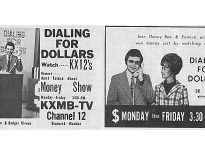Larry Benedict – Beyond Three Strikes

This article is part of our ‘Guru’ series – investor profiles of those who have succeeded in the markets, with takeaways for the private investor in the UK.
You can find the rest of the series here.
Contents
Larry Benedict
In his early career, Larry Benedict lost a lot of money trading and got fired regularly.
- But there is no “three-strike” rule in trading, and eventually he became a success.
Benedict appears in Jack Schwager’s book Hedge Fund Market Wizards. His chapter is called Beyond Three Strikes.
Schwager asked him how he changed from a losing trader into a winner:
I learned to pay attention to how markets moved relative to each other. I became a correlation trader.
I haven’t been able to track down a photo of Benedict, so if you spot one, please let me know.
At university, Benedict dated a girl whose father was a soybean trader. During a vacation, he visited the floor. “It was the most awesome thing I ever saw. I thought – ‘This is what I got to do.'” He loved the competitive nature of the markets.
In 1989 he was hired by Spear, Leeds & Kellogg (SLK) to be an option specialist in the XMI index – an index based on 20 blue-chip stocks on the American Stock Exchange.
When volume in the XMI started to dry up in 1992, Benedict became an off-the-floor index derivatives trader. In 1993, he headed up the firm’s new proprietary trading department.
When Goldman Sachs bought SLK in 2000, Benedict was working in Florida and didn’t want to come back to New York and wear a suit. So he stayed in Florida to start Banyan Equity Management.
Track record
He has never had a large monthly loss.
- His worst month in 13 years of trading is 3.5%.
- He was profitable for 20 consecutive years to 2011, when he lost 0.6%.
Since 2004, his fund has an average annualised net return of 11.5% (19.3% gross), with annualised volatility of 5.8% and a maximum drawdown of less than 5%.
- Benedict’s Sharpe ratio is 1.5 (very high).
- Since most of his volatility is to the upside, this is an underestimate.
- His “Gain to Pain” ratio is 3.4 (extremely high).
Benedict won’t allow family or friends to invest in his fund.
- His family lost a lot of money in 2008, while Benedict was up 14%, but it didn’t change his mind.
- He thinks it would be a distraction.
Benedict is notorious for anger outbursts, and for breaking phones, cell phones and keyboards. ((I remember this from my own days on the dealing floor ))
Trading style
Benedict is a very active short-term trader, averaging 100 to 200 trades a day.
- His core market is the S&P 500, plus foreign equity indexes, interest rate markets, major currencies, and key commodities (oil and gold).
- He bases everything around the S&P 500, looking at correlations between other markets and that one.
Benedict is a mean reversion trader – he sells into short-term upswings and buys into short-term declines.
One of the things I do is three days up, three days down. If the market is up three days in a row, I want to start getting short, and if it’s down three days in a row, I want to start getting long.
Benedict will trade longs in one market versus shorts in a positively correlated market (or longs in an inversely correlated market) if he thinks the price relationship is overextended.
I am sensitive to when the correlations are working and when they are not working. So a trade might work in one time frame, but not in another, and I am constantly adapting.
As soon as I put on a position, I immediately start looking for a trade that would be the best offsetting hedge.
He doesn’t look at charts – or think about fundamentals – during the day.
- He is just “tape reading” – looking at the price action.
- Benedict says that the growing influence of high-frequency trading made it more difficult for pure tape readers.
Risk management
His repeated early losses mean that risk management dominates Benedict’s approach.
- If his losses in any month hit 2.5 percent, Benedict will liquidate the entire portfolio and start with a clean slate – and a halved position size – the next day.
- He trades at smaller size until he starts to make money again.
Benedict does risk management – of directly and inversely correlated positions – in his head.
Early experiences
All of Benedict’s early experiences were negative.
At the time of the 1987 crash, he was trading the NYA index.
- He came in short straddles (short 20 calls and 20 puts).
Not only did the puts sky-rocket as the market crashed, but the calls also went up because volatility exploded. So I was losing money on both sides of the trade.
- He lost his whole account (shared with a sponsoring firm) in one day.
Seeing that day taught me that anything can happen.
Yet the sponsor firm gave him more capital to continue working for them.
- Half way through losing that money, another firm offered to take him on.
- He lost half of that money and got fired.
I never gave up. I saw all these other guys making money, and I thought if they could do it, I could do it.
A friend in the trading pit got him a job at SLK, as a specialist for the XMI calls.
- He was making a market but also trading a proprietary account (with the advantage of seeing the order book).
He learnt to anticipate the market so that he could hedge his position using futures.
- In particular, he looked for inter-market relationships.
Marty Schwartz
Benedict worked for Marty Schwartz (another of the traders interviewed by Schwager) and Schwager asked what Benedict had learned from him:
- Don’t average losing trades.
- Be smaller than you need to be.
- Take your profits.
Common mistakes
Schwager also asked what common mistakes he thought that other traders made:
- Averaging losing trades – you should take the loss and move on.
- Not maintaining discipline – people blow up because they lose their discipline.
You always have to manage money for yourself, not your clients. Once you start adjusting your trading to fit what your investors want, you are in trouble.
I have seen a number of traders who ended up committing suicide or being homeless. They all had a gambler’s mentality. When they were losing, they were always looking for that one trade that would make it all back. You can’t do that.
Conclusions
Benedict’s approach is easy to describe – he uses inter-market correlations to grind out profits from hundreds of trades – but almost impossible to implement for a private investor.
- He relies on personal experience, built up through decades and lots of failure.
- Everything is discretionary, rather than formulaic.
- There is no “process” that an outside investor could apply.
We can conclude that the price action of other markets can contain useful information.
- But we don’t know what that is, or how to use it.
His risk management approach is more useful, though again extreme.
- The takeaway, as so many times before, is trade small when you are losing, and don’t go back to normal size until you are winning.
- Whether a 2.5% losing month is sufficient to trigger this is up to you, but using a pre-defined trigger level is probably a good idea.
Another lesson comes by chance from the timing of Schwager’s interview:
- In late 2010, Benedict was pushing pushed to reach his target for a minimum annual return.
- It didn’t work out.
- Trading needs to be motivated by opportunity, not the desire to make money.
- Swing for the fat pitches only.
Until next time.



















I can tell you this about Larry as I have met him and have had interaction with him. He is not a flashy person and in fact when I first met him he had jean shorts on if I am not mistaken. While he may be known for breaking a keyboard, he is a very, very generous honest person. This is a guy with one heck of a big heart who fly’s below the radar. If he tells you he is going to do something, he is good for it which is a rarity these days.